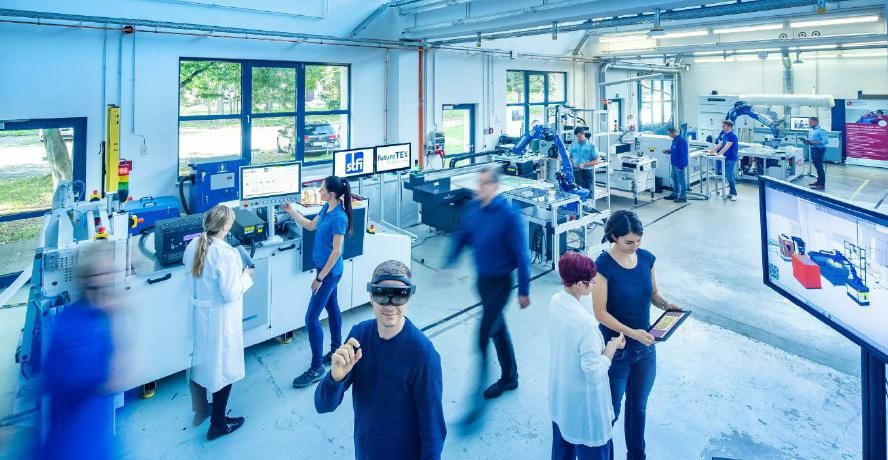Automating Building Management with FlowFuse & Node-RED
FlowFuse removes most of our concerns about scalability and reliability. It’s also making it a lot easier for us to complete security audits for our customers. FlowFuse’s stack is open, widely used and well documented which gives auditors confidence in our applications built on your platform.
FlowFuse’s Customer Success Manager, Rob Marcer sat down with PowerWorkplace’s CTO Alan Yeung to discuss how Node-RED and FlowFuse are helping them deliver better results, with a smaller headcount, at a faster pace.
Rob Marcer: Thanks for taking the time to talk with me today. Please describe what your company does and how large it is?
Alan Yeung: We provide workplace management solutions and tools to empower companies to get better usage of their workspaces. First, we take a consultancy driven approach, we spend time understanding clients' needs, how they use spaces, and what value those spaces provide. Secondly, we create solution proposals including full system integration and design plans. Thirdly, we manage the design and implementation and finally, we provide ongoing support services. Our solution focuses are space utilization, environmental monitoring, and we also provide data analytics around energy consumption and efficiency.
Rob Marcer: How can you quantify the size of your organization?
Alan Yeung: We're a relatively small organization but most of what we do are automated solutions. Once we have implemented services for a customer, it doesn’t require much in the way of manpower to provide ongoing support. Also, as we are working with customers in multiple countries, it makes more sense for us to partner with local subcontractors for cabling and hardware installation works. In terms of our scope and scale, we operate throughout Asia Pacific. We cover around 14 countries where we have ability to deliver projects. Most of our clients are global enterprises, such as large financial institutions and technology companies. In fact, any organization which has a reasonably large real estate footprint can benefit from the services we provide. Let's say for example a customer is dealing with 5 floors within each building in multiple buildings across a region. The great thing about the solution we're providing is it’s easy to scale as a customer adds more floor space, we can take what we’ve put in place at their existing locations and deploy it to new buildings as needed.
Rob Marcer Where does Node-RED fit into your services?
Alan Yeung We deal with lots of different types of physical hardware applications and protocols, and we tend to design bespoke solutions for our clients. This means that we must deal with a wealth of different types of interface points. In terms of rapid deployment or being able to have the flexibility to introduce new components, Node-RED really is a vital piece to that puzzle. It reduces our time and investment in coding. It allows us to link almost any IoT devices or cloud data sources easily and add additional functionality as needed.
Rob Marcer: Where do you host Node-RED?
Alan Yeung: It's a mixture, there are gateway devices for example where we will run Node-RED in a workplace. We might also host Node-RED in a private cloud provided by the customer.
We are a certified Microsoft partner, so we have some Node-RED instances hosted in Azure. We are trying to move towards having less dependency on running our own environment because as I mentioned, we want to reduce the amount of time we spend on maintaining our own systems. That's where FlowFuse Cloud is interesting for us because it allows us to focus on growing our business rather than maintaining environments.

Rob Marcer: What were you using before Node-RED?
Alan Yeung: We’ve used Node-RED almost since the beginning. Our background is in workplace systems integration and audio-visual system implementation. For us, Node-RED is easy to learn and allows us to implement new features and ideas in hours rather than weeks.
Rob Marcer: Can you think of any weaknesses in Node-RED that come to mind for you?
Alan Yeung: Version control could be stronger. If we have multiple people working on a flow it can be hard to spot where a new bug was introduced. We also see situations where Node-RED instances must be restarted to fix a problem or deploy a new stack. We need to find better ways to manage those administration tasks.
Rob Marcer FlowFuse is working to address the challenges of version control, we've implemented our DevOps Pipelines feature which allows our users to build, test and deploy their Node-RED applications with the confidence that they can easily roll back to a previous state in a few clicks of a button. I expect a lot more to be added to FlowFuse in this area over the coming year.
Rob Marcer: What's been the impact of Node-RED on your business?
Alan Yeung: It's very significant. We didn’t want to bring in a large team of software developers and the management of them as required. Without Node-RED, we would probably spend longer time in our product development cycle with far less customers and revenue. I think it's probably allowing us to get solutions to customers at least three to five times quicker which is a game changer.
Rob Marcer: What technology are you using within your stack that you feel is contributing to your success alongside Node-RED?
Alan Yeung: Where possible we use low or no-code solutions, for example we have Xano as one of our backend platforms which allows us to build APIs very quickly for our own use and/or for third parties. This type of low-code technology platform allows us to create and manage applications more efficiently and quickly.
Rob Marcer: What have been your experiences of using FlowFuse?
Alan Yeung: We don't have to focus on scaling or maintaining our environment or ensuring uptime. We can focus our effort on product development to meet the increasing pace of our customer acquisition. FlowFuse removes most of our concerns about scalability and reliability.
It’s also making it a lot easier for us to complete security audits for our customers. FlowFuse’s stack is open, widely used and well documented which gives auditors confidence in our applications built on your platform.
Rob Marcer: Thanks for your time today, if anyone wants to know more about your services how can they find out more?
Alan Yeung: You can read more about Power Workplace on our website.
Challenge
Rapidly develop, test, and deploy tailored building management solutions.
Solution
Use FlowFuse to allow collaboration and fast deployment of Node-RED flows to customers' premises.
using:
Results
- Significant reduction in time to value for customers
- Empowerment of the whole team to improve products and services



